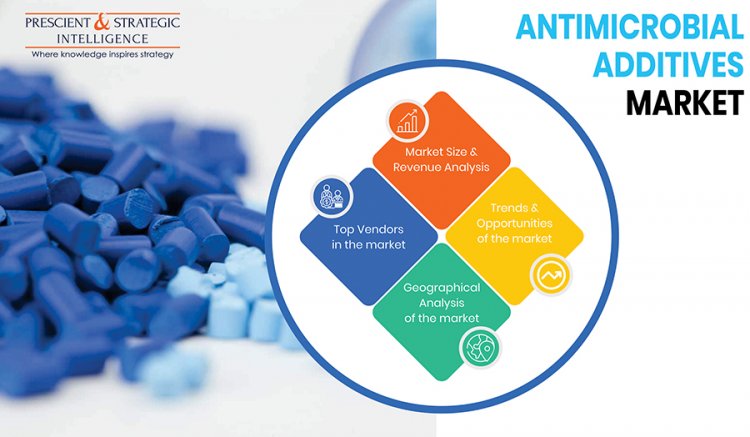What is the Application of Antimicrobial Additives in Healthcare?
Embark on a protective journey through the Antimicrobial Additives Market, uncovering the latest trends, applications, and transformative innovations. Explore the crucial role of antimicrobial additives in various industries, from healthcare to consumer goods, gaining insights into market drivers and challenges.

In a world increasingly focused on hygiene and safety, antimicrobial additives have emerged as a powerful solution to combat the growth and spread of harmful microbes. These additives, formulated with specific active ingredients such as silver or zinc, offer an additional layer of protection to various products and surfaces, providing benefits that extend far beyond conventional measures.
What is an Antimicrobial Additive?
An antimicrobial additive refers to a formulation containing a specific active ingredient with antimicrobial properties. These additives, which often include substances like silver or zinc, continuously combat the growth and survival of microbes on surfaces. They provide an additional layer of protection against stains, odors, and premature degradation for the products they are incorporated into.
Antimicrobial additives are highly versatile and can be seamlessly integrated into various materials during the manufacturing process. They can be applied to a wide range of material types such as plastics & polymers, ceramics, paints & coatings, rubber, fabrics, textiles, paper, laminates, and foam.
Applications of Antimicrobial Additive
The global use of antimicrobial additives in plastics and polymers is particularly significant as the requirement for plastics and polymers is high in the healthcare and food sectors, where these additives are utilized for packaging polyvinyl chloride (PVC) window blinds, piping, insulation, and vinyl siding. These additives also have various applications across different sectors due to their sustainable and preserving properties. Some common applications include:
Packaging
Antimicrobial additives are employed to retard, inactivate, or inhibit the microbe’s growth and increase the shelf life of food products. By utilizing silver ion technology, they can be integrated into film materials and biodegradable polymers made from polylactic acids. These additives effectively control microorganisms in plastic packaging, films, and containers, reducing the reproduction of fungi and bacteria without altering the taste of the packaged food.
Furthermore, antimicrobial additives offer secondary benefits in terms of recycling. They can prevent degradation during use while allowing enzymatic degradation during recycling processes. Additionally, these additives reduce the presence of contaminants, potentially increasing the number of useful lifetimes of a product.
Antimicrobial additives also find applications in other various industries such as automotive, aviation, marine, sports goods, retail, consumer electronics, and building materials/construction.
The demand for antimicrobial additives is rapidly increasing in Asian countries due to the high-volume manufacturing of products and equipment integrated with these additives in the healthcare, packaging, construction, and food & beverage sectors. Additionally, the global requirement for hygienic products will increase the need for antimicrobial additives, and it will reach a value of USD 3,784.3 million by the end of this decade.


 PramodKr
PramodKr 
























